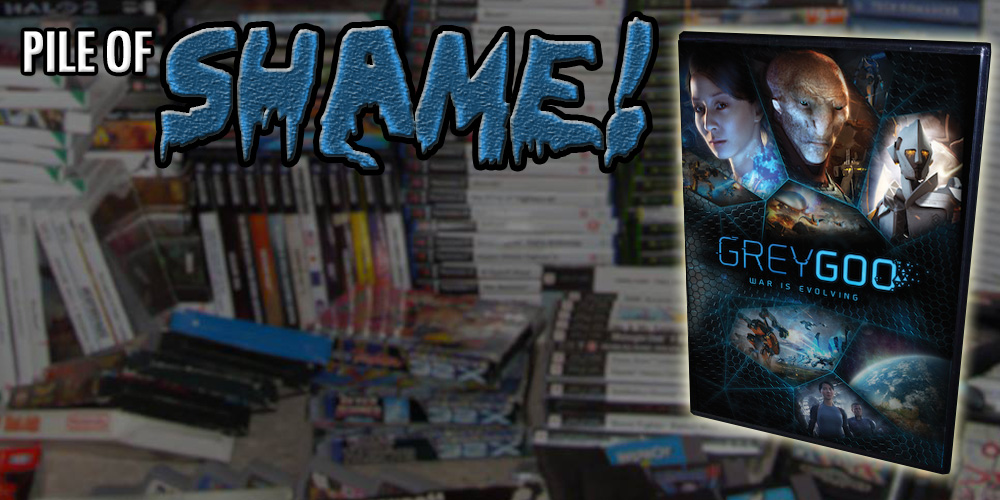
With RTS in a continued state of decline, there was a lot of hype surrounding the release of Grey Goo. From the aftermath of EA continuing to run Command and Conquer into the ground with the cancellation of Generals 2, there were a lot of RTS communities looking for a spiritual successor. Grey Goo was heavily marketed as a return to traditional RTS, and its developers consisted of some of the original founders of Westwood. The stage was set for a massive disappointment.
Coming from a Command and Conquer background myself, the first thing I noticed about Grey Goo was the complete lack of micro management. For the most part, your micro is nothing more than just attack moving your blob of units. (Sometimes a literal blob, if you’re playing as the Goo.) Though, occasionally, you’ll want to kite your units backwards or use attack ground with your artillery, but that really is as fancy as your micro is going to get. There’s no tactics, abilities or nuance. There’s no fulfilment or excitement to be had from controlling your units or executing an attack.
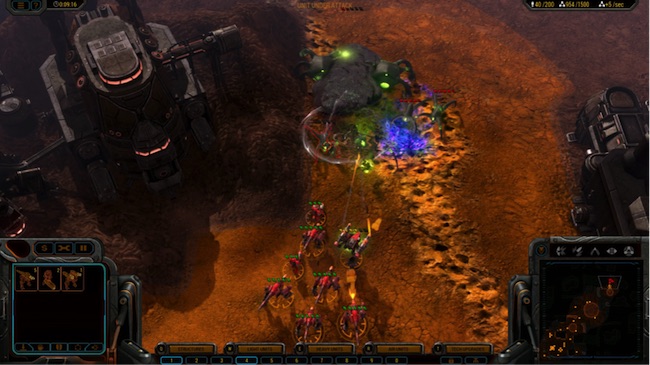
Grey Goo also lacks a hard counter system aside from artillery and air units, so there’s no dynamic of countering your opponent by fielding the right units at the right time. With no proper counters and starved of any interesting micro, Grey Goo feels incredibly spammy and shallow. Engagements essentially just come down to who attack moves with the biggest army.
Grey Goo is more about the production and economy, yet even these are limited and mundane. Production is a pay as you go system instead of the upfront cost like in StarCraft, so building units and structures requires minimal effort. Since there’s no hard counter system you don’t have to adapt and be active with your unit composition, you just keep churning out the same units over and over again. You’re even discouraged from unit mixing since some units can attack on the move whilst others can’t. Where the likes of Supreme Commander make up for it with a complex economy and epic scale, Grey Goo has neither. The economic depth doesn’t go any further than just placing down refineries; there’s no management, opportunity costs or decision making. With no micro, shallow economy and a basic production there’s little room for Strategy.
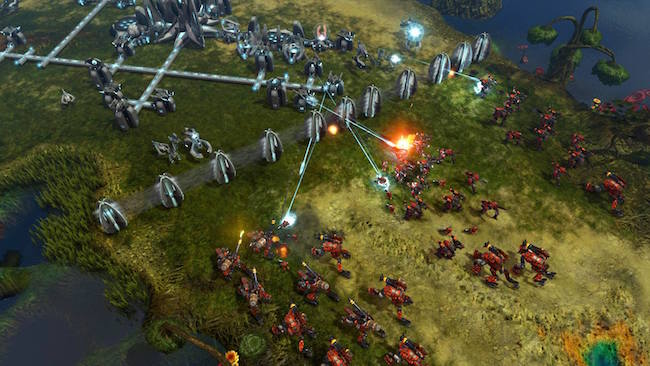
Grey Goo also has a rather botched flow and pacing. Due to the low starting cash, the first 5 minutes are spent doing little more than waiting for your refineries and factories to build. Once your economy and production comes online, Grey Goo fails to flow properly for various reasons:
• Resources don’t serve as a point of contention since there’s plenty to go around for everyone. Flat terrain to build more factories is often more valuable than resources.
• Harassment is limited due to the choke point centric map design. Especially combined with the potency of base defences.
• No hard counter system means there’s rarely opportune moments to attack.
• Engagements rarely happen since they’re basically a numbers game and are easy to disengage if a fight won’t go in your favour.
• There’s no comeback mechanics due to a lack of micro and counter system so players are quite conservative.
Add all these together and you end up with the perfect recipe for a slow, repetitive and unexciting RTS game.
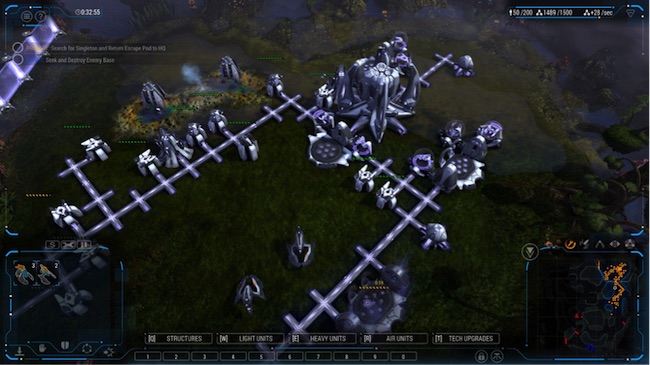
Grey Goo’s monotony is further ramped up by the lack of asymmetrical design. Aside from the Goo faction which does have a unique type of production, but that feels like little more than a gimmick. Just because something is different, it’s not necessarily going to be interesting or fun. The Goo have a few other cool mechanics, but once you start spawning units, you’ll soon realise they’re basically the same as the other factions. Each unit performs a generic role, and they’re all controlled in the same way.
For all three factions, the units feel rather bland and uninspired; from the boring design where they all look the same to their very forgettable voice acting and sound effects. Not only are the units completely dull to use, it also makes it visually unintuitive. It’s difficult to work out what a unit actually does as well as identifying quirks such as fire on the move or anti air. The image below places all of the Human Vehicles next to each other. Good luck trying and work out which one is Anti Air, Artillery, a Heavy Tank and Stealth detection.
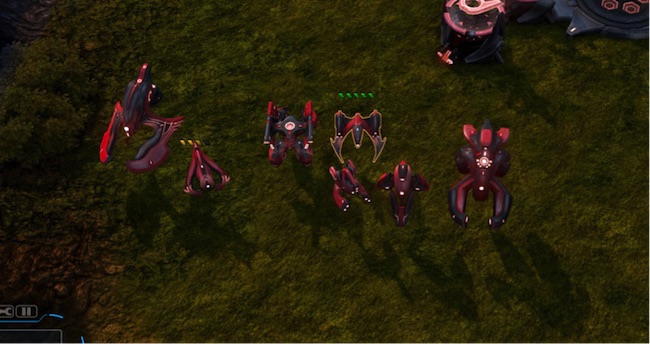
Compare this to its predecessor Command and Conquer, where you can examine any unit and it becomes self-evident. A Flame Tank is strong against infantry and Structures but weak against Tanks. A Rocket Soldier is strong against Tanks but weak against infantry. It makes sense doesn’t it? You don’t have to read a whole bunch of text, play a tutorial or deal with some frustrating trial and error. It’s intrinsically obvious that a Flame Tank is going to roast infantry. This visual intuitiveness is certainly more difficult in a Sci-fi setting but StarCraft and Command and Conquer 3 manage to nail it just fine.
The clarity is for more than just the counter system; it should be a presentation of the unit’s statistics and performance. For example, a Motor Bike or Jet plane suggests it’s fast but fragile, whilst a Tank is slow but powerful. Examples of this can be found in pretty much every RTS game to some extent. This is something that Grey Goo completely fails to do, and the lousy tutorial only makes things worse. Even something as subtle as unit names, for example a “Saboteur” or “Engineer” would suggest they’re a utility unit. In Grey Goo the Stealth Detection unit for the Human faction is named a “Dagger.” Why!? Clarity is an integral part of RTS design because it accelerates the learning curve and makes an RTS game less daunting and stressful to learn. As a result Grey Goo is confusing and tedious to try and grasp. Learning the game feels like a chore.
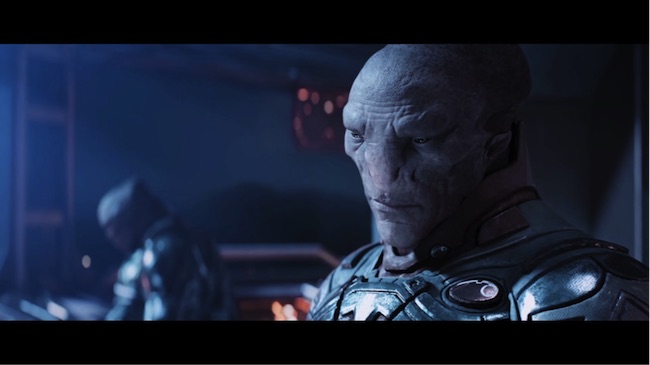
Another attributor to Grey Goo’s failure was the rushed release. When Grey Goo launched back in January, it was missing two crucial features: replay support and observer mode. Whilst it’s not unheard of for one of these features to be missing on launch, for both of them to be left out is bizarre and was detrimental to the life span of the game. With no replays or observer mode it’s impossible to produce shoutcasts, montages, video guides, share strategies, or post replays asking for advice. Not only does this prevent YouTube content which is practically free marketing and publicity, it also limits community interaction which is essential to retaining a significant player base.
Clearly it was a budgeting issue and to give credit where credit is due, Grey Goo finally got an update with both replay support and observer mode. Though it was ultimately too late as Grey Goo is practically dead, both in terms of its online player base as well as community content and forum activity. This is mainly due to Grey Goo’s immense mediocrity and lack of depth, but omitting these features certainly didn’t help. It’s quite frustrating to see games lack such vital polish when they instead sink their budget into fancy cut scenes for the Single Player Campaign.
Grey Goo feels like an awkward mix of existing RTS titles but with no personality or flavour of its own. Aside from Frank Klepacki’s fantastic sound track, the only selling point of Grey Goo was being a new RTS in a time desperately lacking in a future for the genre. Grey Goo’s legacy will be nothing more than another lacklustre and forgotten RTS for Petroglyph to add to their list alongside the likes of Universe at War.











